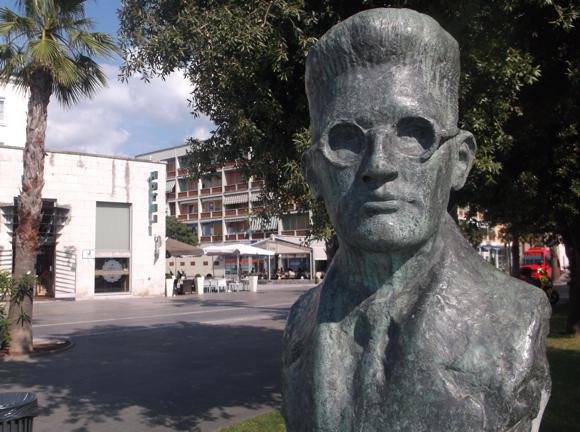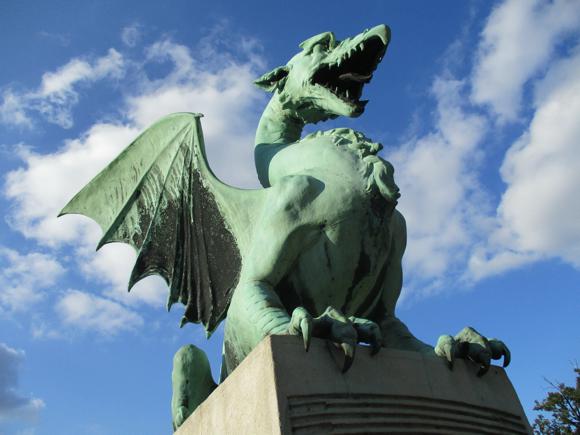Teams, tales and tips – a guide to the local game
Located between Ljubljana and Maribor, Celje is Slovenia’s third-largest city and home to its third most prominent football club. An ever-present in the PrvaLiga since Slovenian independence in 1991, NK Celje are always there or thereabouts – in 2024, the Yellow and Blues lifted the league title for the second time despite managerial changes halfway through.
Regular if rarely successful competitors in Europe, Celje play at a ground that was Slovenia’s national stadium for a few short years in the early 2000s. Between the closure of the now abandoned Bežigrad in Ljubljana and the opening of the Stožice on the outskirts of the capital in 2010, today’s Stadion Z’dežele staged 16 internationals.
Here in 2004, Slovenia beat soon-to-be World Cup winners Italy, Totti, Buffon and all. The originally named Arena Petrol was sponsored by Slovenia’s main oil distribution company, €16.5 million worth of modern football stadium containing 13,000 seats in municipal blue and yellow.
A record 10,055 spectators later saw Norway score a 92nd-minute winner to put Slovenia out of that 2006 World Cup due to take place in nearby Germany.



When NK predecessors SK Celje were formed in 1919, German was the more common language in this part of Styria, referred to as Lower Styria to distinguish it from its Austrian counterpart the other side of the modern-day border.
Urban infrastructure developed during the pre-1918 Habsburg era included the Sportplatz Felsenkeller, opened in 1904. It soon welcomed Athletik Sportklub, founded by German-speaking locals in 1906 and the leading team here either side of World War I. Their ground, over the Voglajna river behind the train station, later became known as Skalna klet. Main venue for football in Slovenia before the opening of the Arena Petrol in 2003, this is now where NK Celje train.
After the collapse of the Habsburg Empire in 1918, the city became part of the newly created Kingdom of Serbs, Croats and Slovenes, forerunner of Yugoslavia. Newly formed SK Cillier SV, their Germanic name soon to gain its Slovenian version of SK Celje, were the only local representatives when the Ljubljana Football Sub-Association was formed on April 23, 1920.



Of the seven clubs, three each from the capital and Maribor. A single-robin championship was organised between May and August, SK Cillier SV placing fifth, playing their three home games on Ljubljanska cesta in a district known as Glazija on the north bank of the Savinja river.
Immediately afterwards, the sub-federation was expanded to 20 members, including four more from Celje: Athletik, Svoboda, Slavija and Vojnik. Invariably Ilirija of Ljubljana were the divisional winners who then took on their counterparts from Serbia and Croatia in the Yugoslav Football Championship.
The strongest team from Celje, Athletik, came closest to winning what was effectively the first Slovenian championship between the wars. Spearheading their attack was Karl Dürschmied, an ethnic Austrian based in Celje in the chaotic aftermath of World War I. Dürschmied even played for Slovenia in their first international, an unofficial game with France in June 1921.
Celebrating the recent Allied victory, the French authorities had arranged a series of exhibition matches against teams from newly created nations, including Czechoslovakia and Romania. In Ljubljana, a strong France XI drawn from their 1920 Olympic squad and coached by Jules Rimet beat Slovenia 5-0. Later, once back in Vienna, Dürschmied won an Austrian cap in 1926.



SK Celje gained a runners-up spot in the de facto Slovenian Championship in 1927. By 1939, Croatia had withdrawn from the all-Yugoslav Championship and a separate Slovenian Football Association was formed, launching its own short-lived league in 1940-41. The only team from Celje, Olimp, completed all 14 games before the Nazi invasion of the city in April 1941.
Athletik then folded and any local football in Celje was subsumed into the Greater German network as part the Gauliga Donau-Alpenland, dominated by Vienna.
Olimp returned to compete in the first post-war Slovenian Championship of 1946 in a city devastated by Allied bombing. Surviving members of Celje’s German-speaking population were sent to Austria or Germany.
Celje joined the league following season, 1946-47, after which they became Kladivar (‘Hammersmith’) Celje, in line with the renaming of sports clubs across newly Communist Eastern Europe. A railway workers’ team was also founded in Celje, ŽŠD, based at Skalna klet near the train station. Kladivar later merged with the Railwaymen to move in, leaving Glazija to be demolished.



When Slovenia gained its independence in 1991, Celje joined the newly formed, 21-team Slovenian League as NK Publikum, based at Skalna klet. An injection of cash from the domestic oil industry in 2003 funded the construction of a new stadium, the Arena Petrol, and an influx of new players for the hosts to claim runners-up spots in league and cup.
Ditching ‘Publikum’ for straightforward NK Celje in 2007, the club gained a growing fan base and a widely used nickname, Grofje, the Counts, after the local medieval rulers. The city also welcomed the arrival of a second club, NK Šampion, based at the modest Olimp centre on Opekarniška cesta, on the way up to the main stadium. Although the Blues climbed from the fifth tier to Slovenia’s Second Division in six years from 2005, they’re best known for running football schools and nurturing young talent. The seniors compete in and now competes in the 3.SNL – East, the third flight.
As Šampion were rising up the league ladder, Celje was being used as the home ground of Slovenia’s national team. With Olimpija collapsing and without a main stadium, Ljubljana’s status waned and Celje nipped in to win domestic silverware. A league title and convincing win in Europe didn’t come until 2020, by which time only Celje and Maribor had competed in every single league season since Slovenian independence in 1991.
Though he was tempted away by his former club Bordeaux in October 2023, one-time Liverpool winger Albert Riera made enough of an impression over his months at Celje for them to woo him back for the 2024-25 campaign, the team having clinched a second title the previous May.
Getting Around
Arriving in town, local transport and tips




Ljubljana’s Jože Pučnik Airport is 80km (50 miles) from Celje. There is no direct public transport between the two. An Arriva bus runs from outside Terminal A to Ljubljana bus terminal (€4.10 from the driver/machine outside, Mon-Sat every 30mins, Sun every hr, 50min journey time). In Ljubljana, the bus concourse is outside the train station.
Taxi društvo Ljubljana (+386 41 970 000) should charge around €45 for the same journey.
From Ljubljana, a direct train (€8-€11) should take 1hr 10-30mins, the slower ones requiring a change at Zidani Most. A bus (€7.50) takes 1hr 45mins.
Five of the six local Celebus lines (€1 on board) call at the train and nearby bus stations on the eastern edge of Celje city centre. The network serves the stadium to the north, otherwise a steep 20min walk. Taxi Maxi Celje (+386 70 400 200) is a reliable local firm.
Where to Drink
The best pubs and bars for football fans




Perhaps the best place to head to first in Celje is tucked away down a cobbled sidestreet between St Daniel’s Church and the Savinja river: Špital za prjatle offers excellent beers, friendly match-watching, live entertainment, a familial atmosphere and seats outside. A short stroll across Slomškov trg, TaMkoUčiri serves craft Reservoir Dogs beer from Nova Gorica in a secluded courtyard, glasses raised in September 2024 to celebrate the bar’s 20th anniversary.
Overlooking the nearby main square, Glavni trg, Oaza 2.0 has gone from a friendly corner bar that shows games to an upscale hangout with a comprehensive coffee selection amid literary décor. Bizarrely, beer is a basic choice between Heineken and the main Slovenian standards of Union and Laško. The big screen remains but the clientele may have moved elsewhere.










Many locals are awaiting the reopening of the legendary Kino Metropol, a stylish café and live venue in a historic cinema created a century ago by a student of Slovenia’s most famous architect, Jože Plečnik.
The nearby Branibor Pub sits in a prime location where a tavern has stood since 1851. Alongside a courtyard and terrace, ideal in summer, it’s part of a complex run by Celje’s main catering company, who also opened a nightclub here and a cellar for private parties. Also close on Mariborska ulica, the Kavarna IndeX is one of Celje’s most popular summer terraces, with matches shown when required.
For a sports pub pure and simple, you’ll have to wait for the reopening of the Hotel Celeia just up from the train station, which closed during the pandemic and has yet to restart operations.
Where to stay
The best hotels for the stadium and city centre









Visit Celje has modest accommodation information.
The two main hotels in town are in the same Eurotas Group, which kept the landmark Evropa open during the pandemic, but not the mid-range Celeia, which has its own sports pub, neither of which have operated since 2020.
Both hotels are close to the train station: the old-school Evropa has been serving rail passengers since 1873, now allowing it to boast of 150 years’ service. Popular for weddings and celebrations, it houses a café and restaurant, both key meeting places in town, partly because of the cake selection. The 62 four-star rooms represent the finest lodging in town.
By the bus station, the MCC Hostel comprises individually painted singles and doubles with showers, along with dorms, available for knock-down prices. Another affordable option, and even more central, Apartmaji Fazarinc contains three spacious, well-appointed apartments available on most major hotel-booking sites – the advertised sauna isn’t always in operation, so ask first.
The only hotel in the general direction of the stadium, the Grande offers mid-range chintz in a no-man’s-land of the Citycenter mall and a major traffic intersection.







